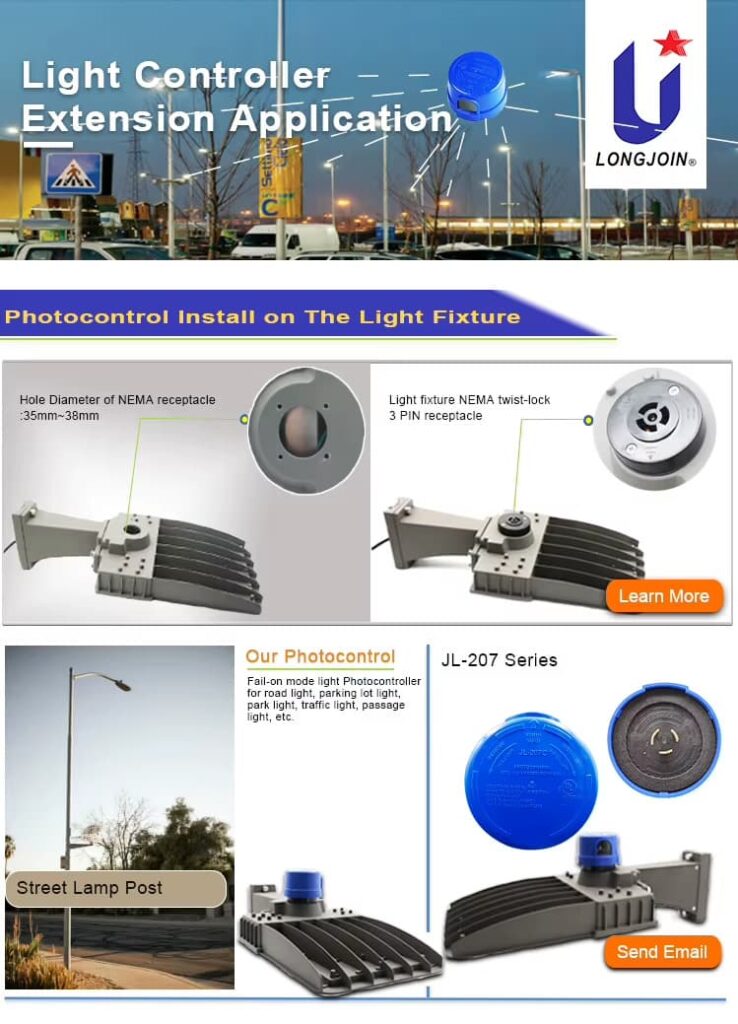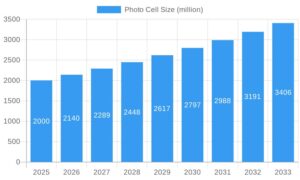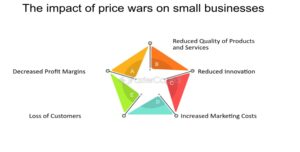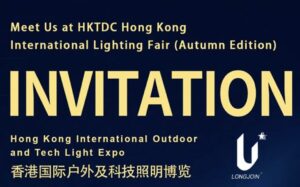How Long-join Protects Intellectual Property to Prevent Competitors from Copying Our Photocell Technology and Design
Introduce
them. In an industry where designs can be quickly imitated and market advantages eroded overnight, safeguarding our technology is just as critical as developing it.
This article explores how we defend our photocell innovations through strategic intellectual property (IP) measures, ensuring our photocell sensor designs remain original, secure, and a step ahead of the competition. We protect our ideas with patents, trademarks, and anti-counterfeit systems. This is how we stay ahead—and stay the only ones doing it.

Why is Intellectual Property Protection Important for Photocell Technology?
Photocell and lighting control technology changes quickly. In this fast world, “intellectual property” or IP isn’t just a legal phrase. It acts like a shield that protects new ideas. Street lights are getting smarter. That means photocell parts like sensors, switches, and controllers can be copied far too easily.
Photocell systems are small but powerful. They automate lighting functions, especially for dusk to dawn photocell applications. Demand for smarter city infrastructure is growing. Protecting the tiny brains behind those systems is critical. This protection stops rivals from stealing ideas. It also keeps them from selling cheap, low-quality copies.
To stay ahead, manufacturers of photocell street light technology like Long-join must take strict steps to protect unique innovations. Otherwise, competitors may copy our photocell lighting sensor technology, weakening our position in the global market.
How Does Long-join Use Patent Protection to Guard Innovation?
Protecting invention begins with patents. A patent gives us the exclusive right to use and sell our unique designs and technologies. Without it, copycats can swoop in fast.
What is Long-join’s Strategy for Patent Applications?
We file for patents as soon as a new innovation is developed. This ensures our latest designs, like the outdoor photocell light sensor, are registered early enough to prevent replication.
Patents are not just for complicated technologies. Even a small change in photo sensor placement or energy-saving methods in a photocell control system can be revolutionary. Filing promptly gives us a legal edge.
Strategy | Details |
Filing Timeline | Immediately after R&D completes |
Coverage | Global markets, including the EU, US, and Asia |
Why Does International Coverage Matter?
Our photocell solutions are used across borders. Limiting protection to one country isn’t enough. With international patents, we protect against counterfeit products being sold in multiple regions.
This approach is crucial because photocell led street light products are used in varied markets with different regulations. Having global coverage means we can stop copycats anywhere they try to sell.

How Do Trademarks and Copyrights Play a Role?
Names matter. Designs matter. Software and manuals matter too. All of them need protection.
How Are Our Brands and Visual Assets Protected?
Long-join’s logos, product names, and packaging are all trademarked. This stops other photocell sensor providers from impersonating our identity.
In many markets, trademark violations confuse customers and hurt reputation. A fake photocell switch with our name on it not only loses business—it may also harm someone if it fails. That’s why registration is essential.
We also copyright all product manuals, technical documents, and software systems related to our street light controllers and photocontrol interfaces.
IP Type | What’s Protected | Purpose |
Trademark | Brand name, logo, product lines | Prevent imitation in the market |
Copyright | Technical files, guides, firmware | Stop replication of internal tools |

How Does Long-join Handle Trade Secrets Internally?
Not every idea gets a patent. Some are best kept secret.
What Measures Are in Place?
Trade secrets like software algorithms or manufacturing processes need airtight controls. Here’s how we do it:
- Strict Confidentiality Agreementswith employees and partners
- Limited Accessto sensitive projects based on department roles
- Confidential supply chain contractsto avoid leaks from external vendors
Our top designs, like the light photocell sensor, are only handled by trusted staff and certified suppliers. These agreements ensure no one can legally reveal sensitive design schematics or algorithms.
In practice, that means everything from machine calibration techniques to sensor communication protocols stays within secure environments.
Can Photocell Technology Be Protected from Reverse Engineering?
Reverse engineering is when someone buys a product and tries to figure out how it works by dismantling it. It happens a lot in tech, and especially with photocell sensor products.
What is Clean Room Development?
To prevent leakage, we develop our designs in clean rooms—isolated environments where only select engineers have access. This ensures our photocell control technologies aren’t influenced by external products, nor can they be easily mimicked.
This method makes it harder for someone to look at our product and guess how to build it from scratch. Clean rooms maintain secrecy during the crucial design phase.
What Technical Barriers Are in Place?
Our products are designed with:
- Encrypted communicationbetween sensors and controllers
- Anti-tamper housingsto prevent internal inspection
These features are especially critical for smart remote control switch and controller intelligent lighting systems where firmware can be a target for hacking.
How Does Long-join Monitor the Market for IP Infringement?
Even after protection, monitoring the market is critical. If we don’t look for violations, someone else might profit from our hard work.
What is Market Surveillance?
We monitor sales platforms, exhibitions, and import/export records to identify similar-looking products. If any clone of our photocell light switch or NEMA socket appears, we assess if legal action is needed.
For instance, when a suspiciously similar photocell 220v design surfaced in an overseas market, our monitoring flagged it within days.
When Do We Take Legal Steps?
Once infringement is confirmed, we:
- Send cease-and-desist letters
- Launch legal proceedings in the jurisdiction involved
We partner with local legal teams and utilize trade organizations for support when necessary. This strengthens our response to illegal replicas.
How Does Employee Awareness Help Protect Photocell Designs?
Technology can only go so far—human awareness is what seals the deal.
How Do We Train Our Staff?
At Long-join, employees undergo IP training sessions quarterly. These workshops cover:
- Recognizing valuable IP assets
- Proper documentation of new ideas
- Safe communication channels
Everyone from designers to admin staff understands the importance of guarding our photocell for street light innovations.
What Internal Reporting Systems Exist?
We provide an anonymous portal for staff to report any suspected IP leaks. This builds accountability and creates a culture of protection.
Do We Collaborate with Industry Bodies?
Yes. We work with industry alliances and regulatory bodies to build stronger protections across the photoelectric and lighting control sectors. This joint front makes the industry safer from pirates.
We also contribute to research and publish case studies in trusted associations such as the Lighting Controls Association.
What Real Benefits Come From These Protections?
Intellectual property protection isn’t just paperwork. It builds confidence across the board.
Our partners know their investments are safe. Our engineers feel motivated to innovate. And our customers get exclusive access to reliable, forward-thinking photocontrol receptacle products.
Benefit | Result |
IP Protection | Stops unauthorized copying |
Supplier Trust | Encourages long-term cooperation |
Industry Recognition | Enhances reputation for innovation |
This overall strategy drives success and future readiness.
Conclusion
By combining patents, trademarks, encryption, and internal training, Long-join ensures our photocell technology stays safe from competitors. This lets us lead with confidence in a fast-moving lighting control industry.
We don’t just innovate—we protect every idea, every product, and every edge we build.
External Links
●https://www.wipo.int/en/web/business/ip-valuation
●https://en.wikipedia.org/wiki/NEMA_connector
●https://lightingcontrolsassociation.org/
●https://en.wikipedia.org/wiki/Intellectual_property






